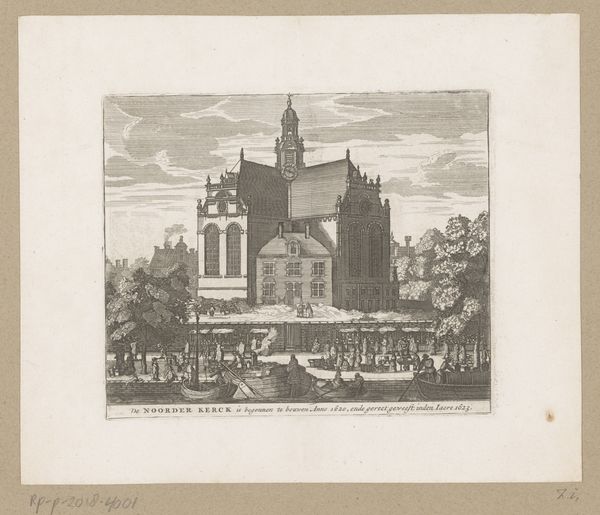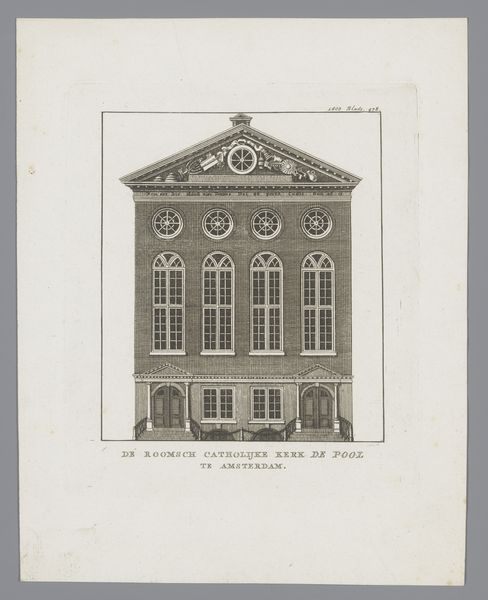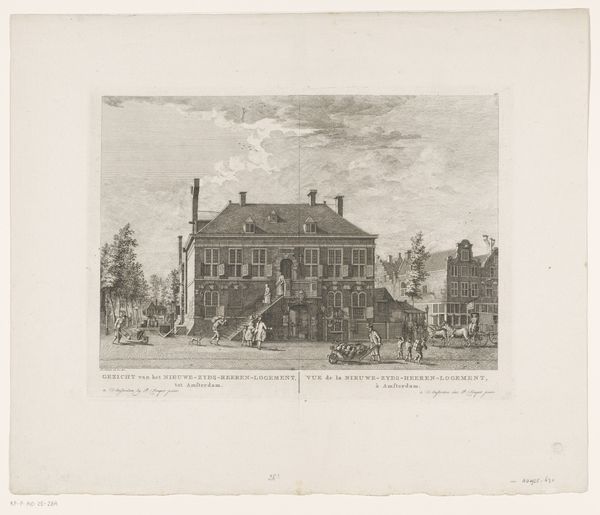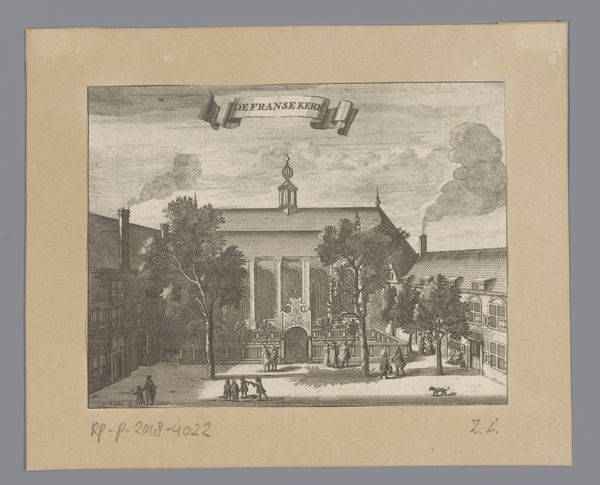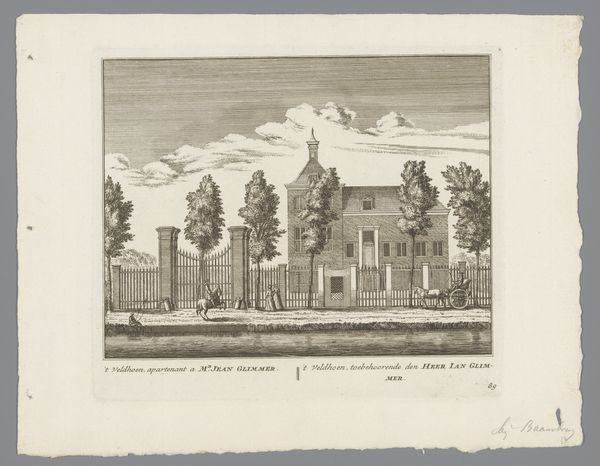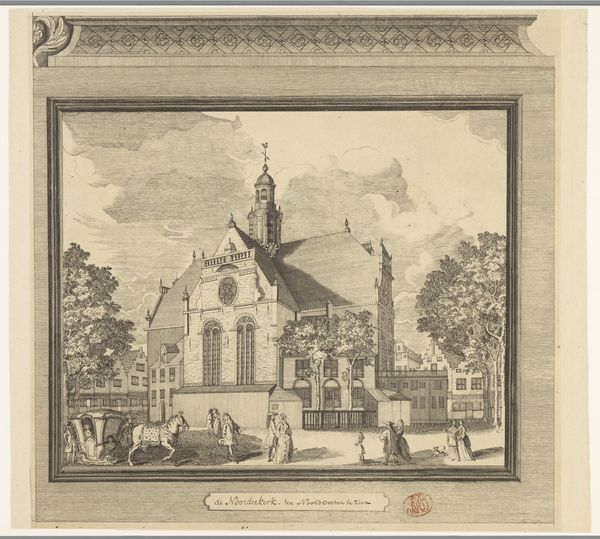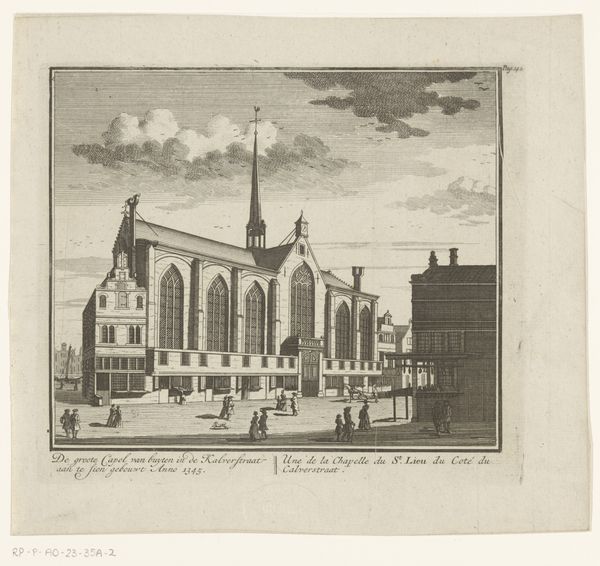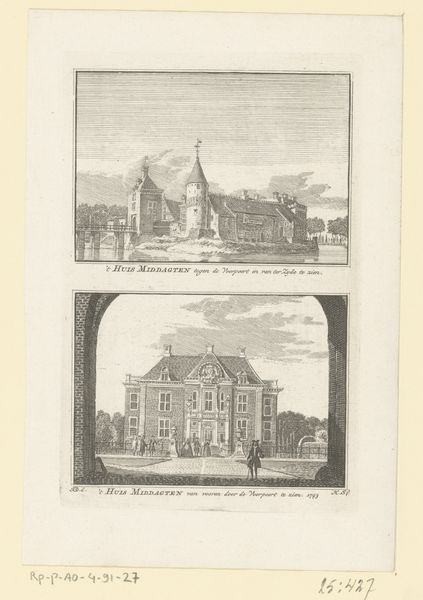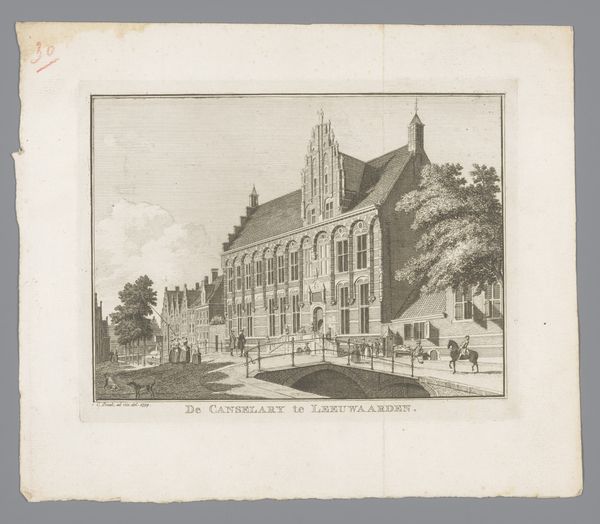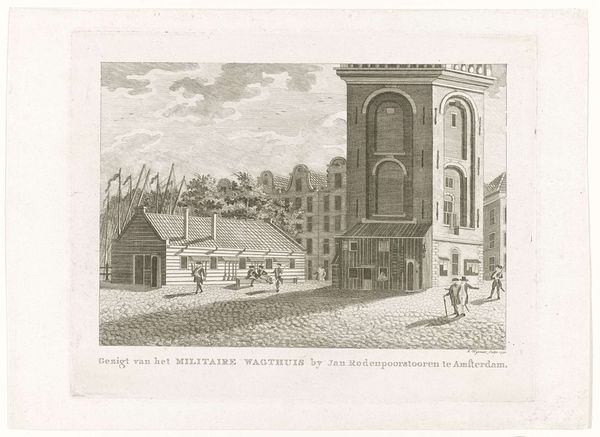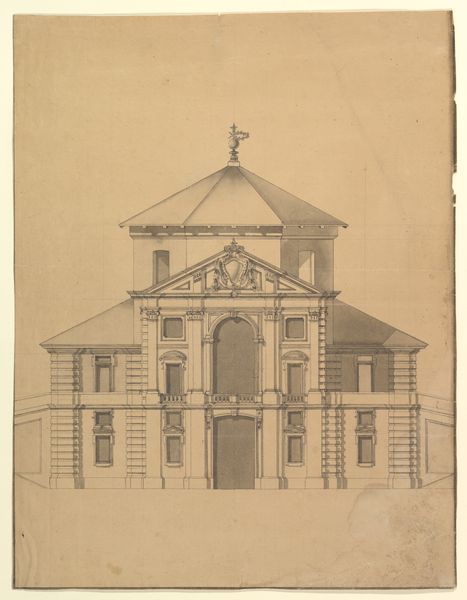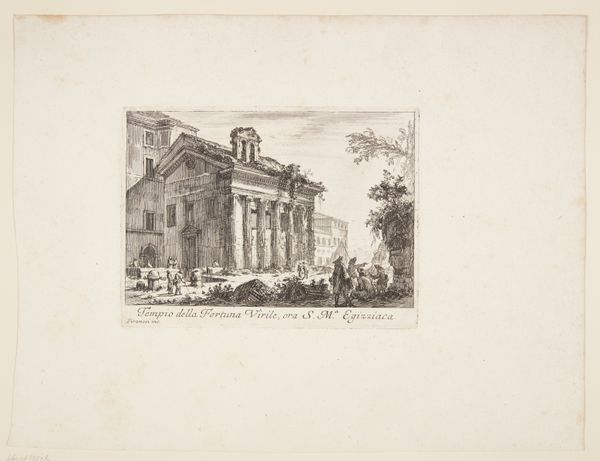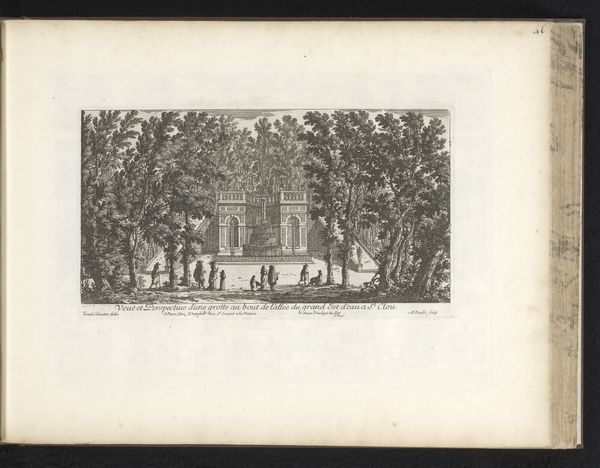
Illuminatie voor het huis van de weduwe van A. van Hemert te Amsterdam, 1788 1788
0:00
0:00
Dimensions: height 230 mm, width 240 mm
Copyright: Rijks Museum: Open Domain
This print, made by Jan Lucas van der Beek in 1788, is an etching. It depicts the illuminated home of a wealthy widow in Amsterdam. As an etching, the image began as a polished copper plate. The artist would have coated the plate with a waxy ground before drawing through it with a sharp needle, exposing the metal. The plate was then immersed in acid, which bit into the lines, leaving an image that could be inked and printed. The texture is intricate, built of many small lines. Look closely, and you can see that the crowds, the horse-drawn carriage, the leafless tree, and of course the facade of the house itself are all rendered in careful detail. The print captures a fleeting moment: the house ablaze with lights, and people gathered to admire it. The etching process allowed van der Beek to capture the temporary spectacle and circulate it widely as an image. As such, it points to the connections between display, consumption, and the burgeoning print economy of the 18th century. In this way, it is a record of not just a house, but a whole social world.
Comments
No comments
Be the first to comment and join the conversation on the ultimate creative platform.
